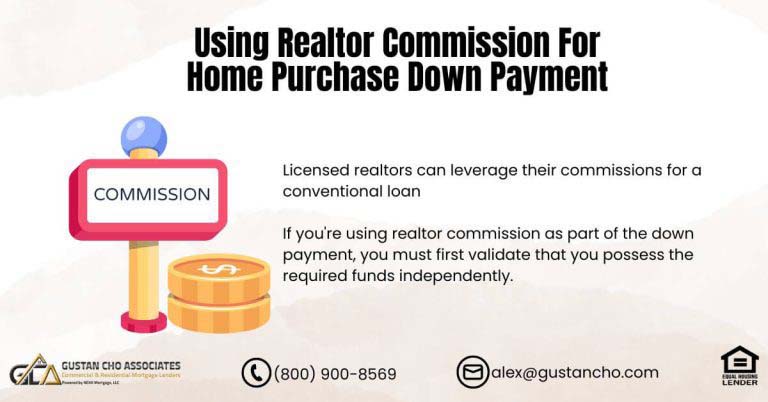This guide covers the Fannie Mae guidelines on conventional loans with a waiting period after mortgage part of bankruptcy. Many of our borrowers are folks with prior bankruptcy, foreclosure, short sale, or deed-in-lieu of foreclosure. Borrowers can qualify for a home loan after bankruptcy and foreclosure. This holds true as long as they meet the minimum waiting period after bankruptcy or foreclosure requirements. Many folks often get confused about the waiting period after mortgage part of bankruptcy. Alex Carlucci, a senior loan officer at Gustan Cho Associates says the following about waiting period after mortgage part of bankruptcy:
Waiting periods normally start from the recorded foreclosure date or deed-in-lieu of foreclosure. The waiting period does not start when the homeowner surrenders their keys to their lender—or vacates the property that the mortgage was part of their Chapter 7 Bankruptcy.
This blog covers the mandatory waiting period after mortgage part of bankruptcy and foreclosure on FHA and Conventional loans. We will discuss FHA and Conventional loans since these two mortgage loan programs are today’s most popular home loans. There are many instances where people will include their mortgage as part of their Chapter 7 Bankruptcy. In the following paragraphs, we will cover the mandatroy waiting period after mortgage part of bankruptcy.
Waiting Period After Mortgage Included in Bankruptcy: FHA, VA, USDA, and Conventional Loan Guidelines
Buying a home after bankruptcy can feel daunting, especially if your old mortgage was included in the filing. Knowing how long you must wait before applying for a new loan is a key part of your recovery. This easy-to-read guide breaks down the waiting times for FHA, VA, USDA, and conventional mortgages when a mortgage goes through bankruptcy, and it also touches on credit tips and other factors lenders look at.
Understanding Bankruptcy and Its Impact on Mortgage Eligibility
Bankruptcy is a court-backed way for people to fix their financial problems by wiping out or rearranging debt. However, it still leaves a big mark on credit scores and getting a new mortgage loan. When a bankruptcy guts or rewrites the bill connected to a home loan, lenders see a red flag because the risk of loss rises, forcing long pause periods before borrowers can try to obtain another mortgage.
How long that pause lasts depends on the kind of loan the buyer wants-whether it is FHA, VA, USDA, or a regular conventional loan-and also on which chapter of the bankruptcy process they went through, either Chapter 7 or Chapter 13.
Under Chapter 7, most bills vanish after the sale of certain assets. Yet, Chapter 13 spreads repayment over three to five years so debtors keep more property while paying back what they can. The graphic below shows how much time each loan type demands to approve fresh credit when a home mortgage was part of the bankruptcy.
Mortgage in Bankruptcy? You May Qualify Sooner Than You Think
Learn the waiting periods for FHA, VA, and Conventional loans after bankruptcyFHA Loan Waiting Periods After Bankruptcy
FHA loans, backed by the Federal Housing Administration, help people with lower credit scores or rocky financial histories. Because of this, they are often the first choice for folks looking to buy again after bankruptcy. When a mortgage was part of the bankruptcy, the waiting times changed a bit for each chapter:
FHA Loan After Chapter 7 Bankruptcy
Borrowers usually wait two years from the discharge date, not from when they filed. Discharge means they are no longer legally obligated to pay the mortgage. Lenders will still ask for proof that the bankruptcy happened because of events out of the borrower’s control, like losing a job or huge medical bills. If such proof is missing, a longer wait or a manual review step will appear, where steady income and rebuilt credit will take center stage.
FHA Loan After Chapter 13 Bankruptcy
The clock starts after the case is filed, and the wait can be as short as one year on FHA and VA loans if all plan payments are made on time and the court allows a new loan. When the mortgage sits inside the repayment plan, the lender checks that the past-due amounts are caught up. Dale Elenteny, a senior mortgage loan originator at Gustan Cho Associates says the following about FHA loans during or after Chapter 13 Bankruptcy.
FHA loans can work for buyers with mixed credit because the program accepts scores as low as 500 if they make a 10 percent down payment.
A lender can approve a mortgage while the plan is still open. Still, every situation is its own, so borrowers should ask early. A slightly better score of 580 lets them put down only 3.5 percent. Still, applicants need a fresh, positive credit history, such as on-time credit card or car loan payments. They must stay clear of serious new marks after a bankruptcy.
VA Loan Waiting Periods After Bankruptcy
VA loans, which the Department of Veterans Affairs backs, give special borrowing perks to veterans, active service members, and some surviving spouses. When a mortgage shows up in a bankruptcy, the rules are easier than for many other programs, yet there is still a set waiting time:
VA Loans After Chapter 7 Bankruptcy
Borrowers usually wait two years from the discharge date. If the mortgage was wiped out because the home was given back or the debt was erased, lenders look mainly at how they managed money afterward. Severe events, like a major illness, may count as extenuating and could shorten the standstill to only one year if solid proof is provided and the lender agrees.
VA Loan After Chapter 13 Bankruptcy
After a Chapter 13 case ends, borrowers can apply for a new mortgage after just one year, as long as they stuck to their repayment plan and the court gives a green light. If the old mortgage was included in that plan, any lender worth working with will check the payment record to ensure nothing was missed.
Some VA lenders are willing to approve a loan even while the Chapter 13 is still active, as long as the borrowers show steady income and reasonable budgeting.
VA loans have no minimum credit scores, but a handful of lenders will bend that rule if the borrowers also have a low debt-to-income (DTI) ratio and other strong positives. Anyone applying still needs a Certificate of Eligibility (COE) from the VA and proof that their income is reliable.
USDA Loan Waiting Periods After Bankruptcy
USDA loans, from the U.S. Department of Agriculture, help low- to middle-income buyers in rural areas purchase homes with little money down. These loans come with tighter rules after bankruptcy, especially if a mortgage was part of the case:
USDA Loan After Chapter 7 Bankruptcy
For Chapter 7, the wait is three years after the discharge. If an old mortgage was wiped clean, the new lender also wants to see fresh proof of credit-building, like steady, on-time utility bills, rent checks, or small new accounts. Rarely, serious extenuating reasons can shorten the wait time, but doing so means gathering solid, persuasive documents.
USDA Loan After Chapter 13 Bankruptcy
If you filed Chapter 13 and made every payment on time, you can apply for a new mortgage 12 months after the bankruptcy start date. The court must also say yes to the new loan. Lenders will carefully check your past payment records when the mortgage is part of the repayment plan. They might send the file through manual underwriting.
USDA Loans
Most USDA lenders want you to have at least a 580 credit score, but a few will look past that if you explain any issues. You’ll also need to earn no more than 115 percent of the local median income and buy a home in an approved rural spot.
Ready for a Fresh Start After Bankruptcy?
We’ll help you understand when you’re eligible to buy again after including a mortgage in bankruptcy.Conventional Loan Waiting Periods After Bankruptcy
Conventional loans come from private banks instead of the government, so they take a hard line on your credit history, especially if you have a past mortgage problem. Fannie Mae and Freddie Mac set the rules that these loans follow:
Fannie Mae and Freddie Mac Chapter 7 Bankruptcy on Conventional Loans
You must wait four years after the court discharges or dismisses the case. Because most lenders see a discharged home loan as a major black mark, whether through foreclosure or surrender, they ask for that longer pause to ensure your finances have truly healed. In rare cases where a sudden job loss caused the trouble, the wait can drop to only two years, but you’ll need solid papers, at least 10 percent down, and a clean credit record.
Conventional Loan After Chapter 13 Bankruptcy
If your plan wraps up, you wait two years from discharge. If it stalls and the case is dismissed, keep the four-year clock going. When the home loan was part of the repayment plan, lenders also wanted proof that you paid on time and that the court green-lighted any new mortgage.
Even in the middle of a Chapter 13, some borrowers get approved after one year of promised payments. However, that chance depends heavily on the lender and is still rare.
Conventional loans usually want you to start with a credit score of at least 620. If your score hits 740 or more, the rates improve even more. At least 3 percent of the home price must be put down, but coming up with 20 percent means you skip costly private mortgage insurance, or PMI. Lenders also look at debt-to-income, or DTI, ratios and typically prefer them to be no higher than 43 to 50 percent. All in all, showing steady finances helps everything move along.
Why Waiting Periods Differ Across Loan Types
The different wait times after a bankruptcy, foreclosure, or short sale show how much risk each loan type is willing to swallow. The government backs FHA, VA, and USDA loans, so the risk to the lender is lower; that lets them offer shorter waits of 1 to 3 years and help people who might not qualify elsewhere, like first-time buyers and veterans.
On the other hand, conventional loans have no such backing, so they ask for longer pauses, between 2 and 4 years, especially after a mortgage gets wiped clean in bankruptcy, because that event itself signals a serious default. Including a mortgage in a bankruptcy plan is a big red flag to lenders. It ties back to real property debt, which they watch closely as a sign of how well someone manages money.
Factors Influencing Approval After Bankruptcy
Once the wait is over, several other pieces still matter when a lender looks at a file that involves mortgage trouble:
- Credit Rebuilding: After the dust settles, applicants need to build fresh credit lines, whether through secured cards, small auto loans, or rent payments that show up on the reports.
- A clean pattern of on-time payments is vital.
- Extenuating Circumstances: Events that shake up your financial situation, such as losing a job, divorce, or facing a medical emergency, can sometimes slash the waiting time for FHA, VA, and conventional loans.
- USDA loans, however, do not bend the rules for these reasons.
- Proof could be a layoff notice, piles of unpaid medical bills, or letters from your old employer.
- Debt-to-Income Ratio: Most lenders like to see your debts eat up less than 43 percent of your gross monthly income.
- FHA and VA will stretch that to 50 percent if you have other strong signs of creditworthiness.
- Consistent paychecks show them you can handle the mortgage payments.
- Down Payment: Pouring more money upfront usually opens more approval doors, especially when seeking a conventional loan.
- If you go FHA, 3.5 percent works, and VA loans give you the rare option of no down payment.
- Bankruptcy Documentation: When you finally apply, be ready with official discharge papers, details of any ongoing Chapter 13 repayment plan, and proof that the court blessed the new mortgage.
- Sometimes the lender will also want a brief explanation of why the old mortgage ended in bankruptcy.
Steps to Qualify for a Mortgage Post-Bankruptcy
If you want to buy a home after bankruptcy, stick to this simple game plan.
- Know What You Filed: Start by checking whether it’s Chapter 7 or Chapter 13, and determine if the mortgage was wiped away or locked into a repayment plan.
- Grab copies of the discharge papers or written payment plan for your file.
- Rebuild Credit: Use a secured credit card, pay rent or utility bills on time, and avoid new black marks.
- Set your sights on a score of at least 580 for FHA or 620 for VA and conventional loans.
- Save for a Down Payment: Aim for 3.5% with an FHA loan, between 0% and 5% for a VA loan, roughly 3% to 10% if you choose USDA, and at least 5% to 20% for most conventional mortgages.
- Document Extenuating Circumstances: Collect proof, such as medical bills or a layoff notice, that shows why your credit slipped so that you can ask for a shorter waiting period.
- Shop Multiple Lenders:
- Line up quotes from an FHA lender, a VA provider, a USDA bank, and a regular shop like Non-QM Mortgage Lenders, GCA Mortgage Group, or your favorite local credit union.
- By July 2025, New American Funding will still take on okay borrowers after bankruptcy.
- Work with a Mortgage Broker: An experienced broker knows which lenders still look at manual files and can steer you to the ones with light trouble waivers.
- Maintain Stable Income: At least two months of pay stubs and recent tax returns are ready since lenders want steady income before signing off.
Additional Considerations
- Mortgage Insurance: FHA charges lasting MIP, though you can cut it to eleven years with a ten-percent down payment.
- Most conventional loans take PMI with less than twenty percent down, but drop it once your home reaches twenty percent equity.
- VA and USDA loans get a funding fee but carry no monthly insurance cost.
Property Requirements:
FHA and USDA home loans have detailed rules about the house itself. These programs expect the place to be safe and sound, so they order an inspection. VA and regular conventional loans are easier on property condition, but still call for a fair appraisal.
Manual Underwriting
Lenders usually switch to manual underwriting if a bankruptcy appears on your report. That means they handily read through every bill, paycheck, and bank statement. Keeping payments on time after the bankruptcy and keeping the debt-to-income ratio low make this review friendlier.
Timing
Begin gathering documents and cleaning up your credit sooner than you think. The clock on the waiting period starts from the day the bankruptcy is discharged or even the day you file, not when the court closes the case.
Landing a mortgage after including a mortgage in bankruptcy is entirely possible. Yet, it takes steady effort and a game plan.
For most strained finances, FHA and VA loans shine because they only require one to two years of waiting after Chapter 7 or Chapter 13. USDA moves up to three years for Chapter 7, while conventional lending is two to four years because its rules are tighter. By learning these timelines, rebuilding credit wisely, saving clear proof of tougher times, and shopping multiple lenders, hopeful buyers can confidently walk the road back to homeownership.
Bankruptcy Doesn’t Mean the End of Homeownership
Explore your options after your mortgage was discharged through bankruptcy.Start Date on Waiting Period After Mortgage Part of Bankruptcy
The waiting period to qualify for conventional loans after bankruptcy starts from the discharge date of the Chapter 7 Bankruptcy and not the filing date. The waiting period after the short sale starts from the short sale date reflected on the HUD Settlement Statement. There are new changes in the waiting period after mortgage part of bankruptcy that were implemented and launched by Fannie Mae and Freddie Mac. Fannie Mae and Freddie Mac are the two mortgage giants in the United States that set mortgage lending guidelines for Conventional Loans.
Fannie Mae Guidelines on Waiting Period After Mortgage Part of Bankruptcy
These changes in the waiting period after mortgage part of bankruptcy on Conventional loans will help thousands of home buyers. New FNMA Guidelines will help folks who had a mortgage as part of their Chapter 7 Bankruptcy where the foreclosure was not recorded much later qualify for Conventional loans.
There is a four-year waiting period to qualify for a Conventional loan from the Chapter 7 Bankruptcy discharge date. Not the recorded date of the foreclosure. This holds true even though the foreclosure or sheriff’s sale happened much later.
Under the new Fannie Mae Guidelines, the waiting period after mortgage part of bankruptcy is four years from the discharge date. ,
Waiting Period After Mortgage Part of Bankruptcy on FHA Loans
There is a two-year mandatory waiting period after the Chapter 7 Bankruptcy discharge date to qualify for an FHA loan. There is no waiting period to qualify for an FHA loan after Chapter 13 Bankruptcy. However, if the Chapter 13 Bankruptcy discharge has been seasoned for under two years, it must be manual underwriting. Homebuyers can qualify for FHA Loans one year into a Chapter 13 Repayment Plan with Trustee Approval. It needs to be manual underwriting.
Waiting Period After Housing Event To Qualify For Mortgage
There is a three-year mandatory waiting period to qualify for an FHA Loan after the recorded foreclosure date or deed-in-lieu of foreclosure. After the short sale date, there is a three-year mandatory waiting period to qualify for an FHA loan.
There is no mandatory waiting period exists to qualify for an FHA loan after a short sale. This holds true if and only if the homeowner is not late on his or her mortgage payments up to the short sale date.
For borrowers to qualify for an FHA loan after a short sale with no waiting period is if the borrower was timely on all of their mortgage payments up to the short sale date. Suppose you had a mortgage included in Chapter 7 Bankruptcy discharge. In that case, there is a three-year waiting period from the recorded foreclosure date or sheriff’s sale after the Bankruptcy discharge date.
Importance of Deed Transfer After Housing Event
Many lenders are not in a major hurry to transfer the deed of the property out of the homeowners’ name into their name: This is in cases where a homeowner has mortgages as part of their Chapter 7 Bankruptcy. The waiting period start date does not start until the deed of the property has been transferred out of their names after a foreclosure, a deed-in-lieu of foreclosure, or a short sale:
It may take some time to get the homeowner’s name out of the deed. Until the deed to the property has been transferred from the homeowners’ name into the lender’s name or the property was sold, the 3-year waiting period clock did not start yet.
There are cases where people cannot qualify to buy a home with an FHA loan. The waiting period clock did not start ticking because the deed was still in their names. If you have a mortgage as part of your Chapter 7 Bankruptcy, do everything in power to get the deed out of your name into the lender’s name so the three-year waiting period clock has started.
Waiting Period After Mortgage Part of Bankruptcy on Conventional Loans
Great news for Conventional loan borrowers. A four-year mandatory waiting period is required to qualify for a Conventional loan after a Chapter 7 Bankruptcy discharge date. A two-year mandatory waiting period is required to qualify for a Conventional loan after a Chapter 13 Bankruptcy discharge date. There is a four-year waiting period after the Chapter 13 dismissal date. There is a four-year mandatory waiting period to qualify for a Conventional loan after a deed-in-lieu of foreclosure.
The waiting period clock does not begin until the deed has been transferred from the homeowner’s name into the lender’s name. Or the date of the sheriff’s sale or the date the property was sold. The waiting period does not start the day that the homeowner has surrendered the property to the lender or turned in the keys to the foreclosure to the lender.
A four-year mandatory waiting period is required to qualify for a Conventional loan after a short sale. The four-year waiting period clock does not start until the short sale date, reflected in the HUD Settlement Statement. A seven-year mandatory waiting period is required to qualify for a Conventional Loan after a foreclosure. The seven-year waiting period does not start until the recorded foreclosure date, reflected in the county’s recorder of deeds office. Or the date of the sheriff’s sale or the date the property was sold. The date when the homeowner turned in his keys and surrendered the property is not the start of the waiting period.
Cases Where Borrowers Can Qualify For Conforming But Not FHA Loans
Borrowers with a mortgage included in Chapter 7 Bankruptcy can qualify for a Conventional loan four years from the discharged date of Chapter 7 Bankruptcy. This holds true even though the foreclosure and housing event was not recorded and transferred out of your name until after the Chapter 7 Bankruptcy discharge date.
Borrowers who have a mortgage included in the bankruptcy is able to qualify for conventional loans after four years from the bankruptcy discharge date. This opens doors to many homebuyers with mortgages included in the Chapter 7 Bankruptcy.
The foreclosure needs to have been completed and out of the homeowners’ name. The waiting period after the foreclosure or housing event does not matter. Fannie Mae will end the four-year waiting period from the Chapter 7 Bankruptcy discharge date. This differs from HUD’s FHA Guidelines on the waiting period to qualify for an FHA loan if borrowers had a mortgage included in Chapter 7 Bankruptcy. If borrowers had a mortgage included in Chapter 7 Bankruptcy, they only need to wait four years from the discharge date of Chapter 7 Bankruptcy to qualify for a Conventional loan. Thinking about getting a mortgage now that your bankruptcy is behind you? Contact lenders such as Gustan Cho Associates, GCA Forums Mortgage Group, or Preferred Mortgage Rates. They can walk you through FHA, VA, USDA, and even conventional loan choices designed just for your needs. Always double-check the waiting times, gather complete paperwork, and rebuild your finances for the best deal.









